Public domain books are literary works whose copyrights have expired, allowing them to be freely accessed, used and distributed by the public. In other words, these books are no longer under copyright protection, which makes them part of the cultural heritage that can be shared without restrictions. Every January, a new batch of books enters the public domain.
In 2023, among others, works by authors such as Virginia Woolf and Ernest Hemingway became public domain books. Additionally, 2024 saw like Lady Chatterley’s Lover and Orlando joining the public domain. These works can be easily accessed via platforms like Project Gutenberg, HathiTrust, the Internet Archive and Google Books, which host large collections of public domain literature.
This blog post looks at some of the noteworthy books entering the public domain in 2023 and 2024. Furthermore, it explores why the public domain is important, how it benefits society and what implications it has for writers. Finally, it provides resources for finding and accessing public domain books and tips for avoiding copyright infringement when using them.
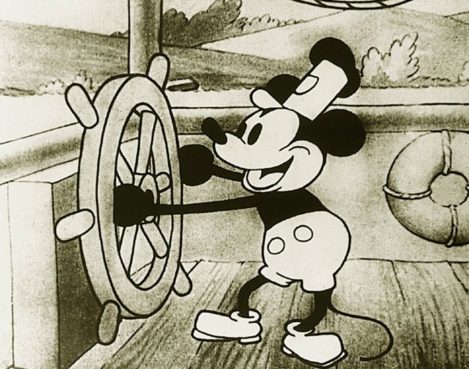
- What is the public domain?
- What is the purpose of the public domain?
- Where to check if a work is in the public domain?
- When do works enter the public domain?
- Can a work leave the public domain?
- What does it mean for writers when a work enters the public domain?
- What can and cannot writers do with the public domain works?
- How can editing and proofreading services help when adapting public domain works?
- What books entered the public domain in 2023?
- What books entered the public domain in 2024?
- Where can you read and download public domain books?
What is the public domain?
Public domain refers to the status of creative works and intellectual property not protected by copyright or any other legal restrictions. Works enter the public domain when their copyright expires, the rights are forfeited or the creator intentionally releases them into the public domain. Once a work is in the public domain, it becomes freely accessible to the public, and anyone can use, reproduce, distribute and adapt it without seeking permission or paying licensing fees.
The goal of copyright is to promote creativity. In turn, the public domain plays a central role in doing so, according to the Center for the Study of the Public Domain. Moreover, copyright ensures that those rights last for a ‘limited time,’ so that when they expire, works can go into the public domain, where future authors can legally use them for inspiration.
What is the purpose of the public domain?
The primary purpose of the public domain is to promote the sharing of knowledge, creativity and culture. Some key aspects and purposes of the public domain include:
Access to knowledge: Works in the public domain are accessible to everyone, and as a result, they foster the dissemination of information and knowledge. This function of public domain is particularly important for educational, research and cultural purposes.
Cultural heritage: Public domain works contribute to the cultural heritage of society. They represent a collective legacy of literature, art, music and other creative expressions that future generations can freely enjoy and build upon.
Encouraging creativity: By allowing free use and adaptation of public domain works, the public domain encourages creativity and innovation. Artists, writers and creators can draw inspiration from and build upon the cultural and artistic foundations made by previous generations.
Free expression: The public domain encourages freedom of expression by eliminating legal barriers that might otherwise restrict the use of creative works. Therefore, artists and creators can freely express themselves without concerns about copyright infringement.
Where to check if a work is in the public domain?
The list of works that have entered the public domain can vary depending on the country and its copyright laws. In many cases, it is not stored in a centralised location. Instead, the public domain status of works is determined by the expiration of copyright protection.
- Australia: Check the Australian Copyright Council and Australian Copyright Agency for copyright information.
- Brazil: The National Institute of Industrial Property in Brazil manages copyright and related rights.
- Canada: The Canadian Intellectual Property Office provides information on copyright.
- France: The National Institute of Industrial Property in France oversees copyright matters.
- Germany: Information on copyright in Germany can be obtained from the German Patent and Trade Mark Office.
- India: The Copyright Office in India provides information on copyright registration and related matters.
- Japan: Copyright information for Japan is available through the Japan Patent Office.
- Mexico: The Mexican Institute of Industrial Property manages copyright matters in Mexico.
- South Africa: The Companies and Intellectual Property Commission in South Africa handles copyright matters.
- UK: Copyright information can be checked through the UK Intellectual Property Office.
- USA: The copyright status of works can be checked USA through the US Copyright Office’s online database.
When do works enter the public domain?
A work of authorship is in the ‘public domain’ if it is no longer under copyright protection or has failed to meet the requirements for copyright protection. Works in the public domain may be used freely without the permission of the former copyright owner, according to the US Copyright Office.
Typically, copyright laws grant exclusive rights to creators for a specific period, after which the works enter the public domain. The length of this copyright term varies by jurisdiction and type of work. Once the copyright expires, the works are no longer under copyright protection, and they become part of the public domain.
For instance, the public domain books 2023 include:
- works by authors who passed away in 1952 for countries with a copyright term of ‘life + 70 years.’ These countries include the UK, Russia, most of the EU and South America.
- works by authors who passed away in 1972. This rule applies in countries with a copyright term of ‘life + 50 years.’ These countries include New Zealand and most of Africa and Asia.
- films and books published in 1927 for the United States.
Similarly, the following works entered the public domain on 1 January 2024:
- works by authors who passed away in 1953 for countries with a copyright term of ‘life + 70 years.’ These countries include the UK, Russia, most of the EU and South America.
- works by authors who passed away in 1973. This rule applies in countries with a copyright term of ‘life + 50 years.’ These countries include New Zealand and most of Africa and Asia.
- films and books published in 1928 for the United States.
Can a work leave the public domain?
No. In general, once a work is in the public domain, it cannot be reclaimed by the original rights holder or anyone else. In other words, once a work enters the public domain, it generally cannot be reclaimed or ‘re-copyrighted.’ The public domain status signifies that the copyright protection has either expired or has been waived by the rights holder. Once in the public domain, the work is considered freely available for public use, and it cannot be retroactively brought back under copyright protection.
However, in certain situations a derivative work based on a public domain work may have its own copyright protection. This would apply to the new creative elements introduced in the derivative work, not the underlying public domain material.
Additionally, if a work is in the public domain in one jurisdiction but not in another due to differences in copyright laws, it could be subject to copyright protection in the jurisdiction where it is not in the public domain. This concept is known as ‘reversion’ or ‘recapture’ and occurs when a work that has entered the public domain in one jurisdiction is still under copyright protection in another.
What does it mean for writers when a work enters the public domain?
Every year, public domain offers writers new opportunities to for creative expression, exploration and collaboration. Furthermore, it liberates them from copyright restrictions and opens up new possibilities for storytelling and the continuous evolution of literature. Here are examples of what opportunities literary works entering the public domain create for writers:
Freedom of inspiration
Writers can draw inspiration from and build upon works in the public domain without the constraints of copyright law. This can be especially beneficial for authors seeking to create new stories or reimagine classics without worrying about legal limitations.
Access to source material
Writers gain access to a wealth of source material that can enrich their creative endeavours. Public domain works, such as literature, poetry or historical documents, provide ideas and themes that writers can freely explore, adapt and incorporate into their own writings.
Revitalising classics
Public domain status allows writers to revive classic works. They can create modern adaptations, sequels or reinterpretations without facing copyright restrictions. This allows older stories to be reimagined for contemporary audiences.
Educational resources
Public domain works serve as valuable resources for writers engaged in educational and instructional writing. For instance, writers can use, reference and quote from these materials without navigating complex copyright permissions, which facilitates easier creation of educational content.
Cultural contributions
By contributing to the public domain, writers contribute to society’s cultural heritage. When their works eventually enter the public domain, future generations will be able to freely engage with and build upon these literary contributions.
No copyright constraints
Writers exploring public domain works are not restricted by copyright constraints. They have the freedom to experiment with different styles, genres and perspectives, knowing that their own creations will one day enter the public domain, providing a similar open space for future writers.
Collaborative creation
The public domain encourages a collaborative approach to creativity. Writers can collaborate more freely, remixing each other’s work and collectively contributing to the literary landscape.
What can and cannot writers do with the public domain works?
Writers have significant freedom when working with public domain works. Still, it is important to understand the boundaries and legal considerations. Here is a breakdown of what writers can and cannot do with public domain works:
What can writers do with public domain books?
Adapt and modify
Public domain works can be adapted, modified and transformed into new creations. Writers can create derivative works, including retellings, modern adaptations or even combining elements from multiple public domain sources. Literary adaptations and modifications may include:
- Writing a sequel or prequel: Writers can create a continuation of the story, exploring what happens to the characters after the events of the original work.
- Updating the work: For instance, writers can update the language and setting to make the story more accessible to modern audiences.
- Changing the medium: Moreover, writers may adapt the work into a different medium, such as turning a classic novel into a play or screenplay.
- Reimagining characters: Authors can introduce new characters or provide alternative perspectives on existing ones. This may include exploring the untold stories or motivations of characters from the original work.
- Combining multiple works: Writers can choose to merge elements from different public domain works to create a unique and original narrative. Furthermore, they can create a crossover story involving characters from different works that have entered the public domain.
- Exploring different endings: Finally, authors can deviate from the original plot and explore alternative endings or outcomes. For instance, they may imagine ‘what if’ scenarios and create a new narrative based on those possibilities.
Create educational materials
Writers can use public domain works in educational materials, including textbooks, articles, study guides, annotated editions and other instructional content. This is particularly beneficial for creating resources without obtaining complex copyright permissions.
- Textbooks and study guides: Writers can incorporate public domain works into textbooks to provide students easy and free access to classic literature, historical documents or foundational texts.
- Articles and research materials: Public domain works can be used as reference materials or foundational texts in articles and research papers. Writers can draw upon the wisdom of earlier works to enhance the quality and depth of their educational content.
- Study guides and annotations: Writers have the flexibility to create study guides or annotated editions of public domain works, helping students understand complex themes, historical context and literary techniques.
- Open educational resources (OER): Public domain works play a crucial role in the development of OER. Writers can contribute to the creation of freely accessible educational resources and support a culture of sharing and collaboration in academia.
- Multimedia educational content: Public domain images, audio recordings and videos can be integrated into multimedia educational content. Writers can enhance their materials by leveraging a wide range of public-domain media.
- Language learning resources: Public domain works in different languages can be utilised for language learning materials. For instance, writers can create exercises, translations or language proficiency assessments based on these works.
Create a public domain dedication
Writers can choose to dedicate their own works to the public domain, releasing them from copyright restrictions.
- Creative Commons Zero (CC0) licences: Writers can release their works into the public domain by applying a CC0 licence, which means they are waiving all copyright and related rights. This allows others to use, modify and distribute their work freely.
- Public domain dedications: Writers may explicitly dedicate their works to the public domain through statements of dedication. This ensures clarity regarding the creator’s intent to relinquish copyright control.
- Encouraging collaboration: Public domain dedications promote collaboration by eliminating legal barriers. Other creators can freely build upon, remix, or adapt the work without seeking explicit permission, fostering a culture of creativity and innovation.
- Contributing to the Commons: Writers contributing to the public domain writers enrich the public domain and provide valuable resources for future generations.
- Fostering accessibility: Public domain dedication enhances accessibility so that creative works are not unnecessarily restricted. This is especially important for creators who want their works to be widely accessible for educational or cultural purposes.
What writers cannot do with public domain books?
Falsely attribute: While writers can use public domain works, they cannot falsely attribute the work to themselves or claim authorship. Proper attribution to the original creator, if known, is still important.
Plagiarise: Even though public domain works can be freely used, writers must be cautious not to plagiarise. Plagiarism involves presenting someone else’s work as one’s own, and this ethical concern remains relevant also with public domain material.
Gain moral rights: In some jurisdictions, creators retain moral rights even after a work enters the public domain. Moral rights include the right to be identified as the author and object to derogatory work treatment. While these rights are not as strong as copyrights, writers should know them.
Violate trademarks: Public domain works may be associated with trademarks, particularly if they have become iconic. Writers should be cautious not to infringe on trademarks when using public domain material.
How can editing and proofreading services help when adapting public domain works?
When writers use public domain works as inspiration for their own writing, they may find it helpful to hire editing and proofreading services to ensure that their adaptations are high quality and free of errors. Furthermore, hiring an editing or proofreading service can provide writers and authors with the support and guidance they need to produce work that is both enjoyable and effective. These services include proofreading, copyediting, line editing and developmental editing.
Proofreading services are the most basic type of editing and focus on correcting spelling, grammar and punctuation errors. Next, copyediting services are more in-depth and involve checking for consistency, style and formatting issues. Line editing focuses on the aspects of writing, such as improving sentence structure and clarity. Last, developmental editing helps writers develop and refine their ideas, ensuring their writing is engaging and effective.
What books entered the public domain in 2023?
A vast number of books became a the public domain books in 2023. Among them, there is a modernist masterpiece, poetry from the Harlem Renaissance, children’s verses featuring Winnie-the-Pooh and other characters and some of the early works of Hemingway and Faulkner. Additionally, the copyright protection for Arthur Conan Doyle’s final Sherlock Holmes stories also expired.
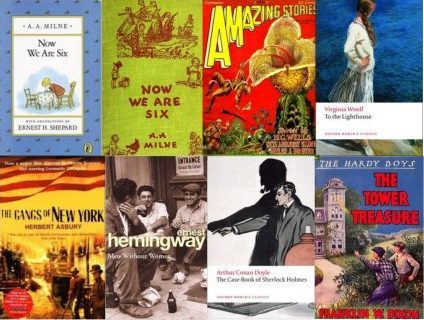
Here are just a few highlights of books entering the public domain in 2023:
- Aspects of the Novel by E. M. Forester
- Caroling Dusk edited by Countee Cullen
- Copper Sun by Countee Cullen
- But Gentlemen Marry Brunettes by Anita Loos
- Death Comes for the Archbishop by Willa Cather
- Men without Women by Ernest Hemingway
- Mosquitoes by William Faulkner
- Now We Are Six by A. A. Milne
- The Big Four by Agatha Christie
- The Bridge of San Luis Rey by Thornton Wilder
- The Case-Book of Sherlock Holmes by Arthur Conan Doyle
- The Colour Out of Space by H. P. Lovecraft
- The Gangs of New York by Herbert Asbury
- The Hardy Boys books 1–3, by Franklin W. Dixon
- To the Lighthouse by Virginia Woolf
- Twilight Sleep by Edith Wharton
What books entered the public domain in 2024?
Works entering the public domain in 2024 include Lady Chatterley’s Lover , a controversial exploration of love and sexuality; Orlando, a gender-bending and time-travelling novel; and All Quiet on the Western Front, a poignant portrayal of the brutality of war.
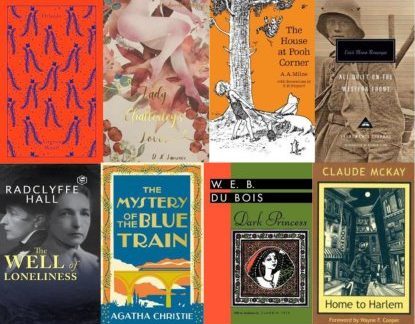
Here are just a few selections of works entering the public domain in 2024:
- All Quiet on the Western Front (in German) by Erich Maria Remarque
- Dark Princess by W. E. B. Du Bois
- Home to Harlem by Claude McKay
- House at Pooh Corner by A. A. Milne
- Lady Chatterley’s Lover by D. H. Lawrence
- Millions of Cats by Wanda Gág
- Orlando by Virginia Woolf
- Peter Pan or the Boy Who Wouldn’t Grow Up by J. M. Barrie
- Tarzan, Lord of the Jungle by Edgar Rice Burroughs
- The Hardy Boys books 4–6, by Franklin W. Dixon
- The Mystery of the Blue Train by Agatha Christie
- The Threepenny Opera (in German) by Bertolt Brecht
- The Well of Loneliness by Radclyffe Hall
- West-Running Brook by Robert Frost
Where can you access public domain books?
Accessing public domain books is relatively easy, as many digital libraries and online platforms offer a wide range of public domain literature. They include Google Books, HathiTrust, Internet Archive, LibriVox, Open Library, Project Gutenberg and Wikisource.
Google Books
Google Books includes a vast collection of books, and many older works have entered the public domain. You can use the advanced search feature to filter results by copyright status.
HathiTrust Digital Library
HathiTrust is a partnership of academic and research institutions that provides access to a vast collection of digital content, including public domain books.
Internet Archive
The Internet Archive offers diverse digital content, including books, music and videos. The ‘Books’ section provides access to numerous public domain books.
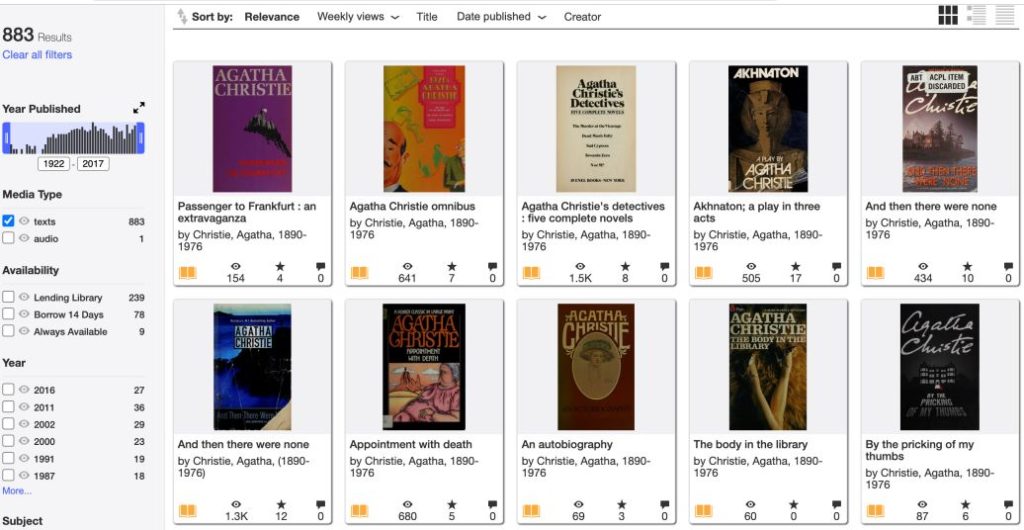
LibriVox
LibriVox provides free audiobooks of public domain works. Volunteers worldwide record audiobooks of classic literature, making them accessible to anyone with an internet connection.
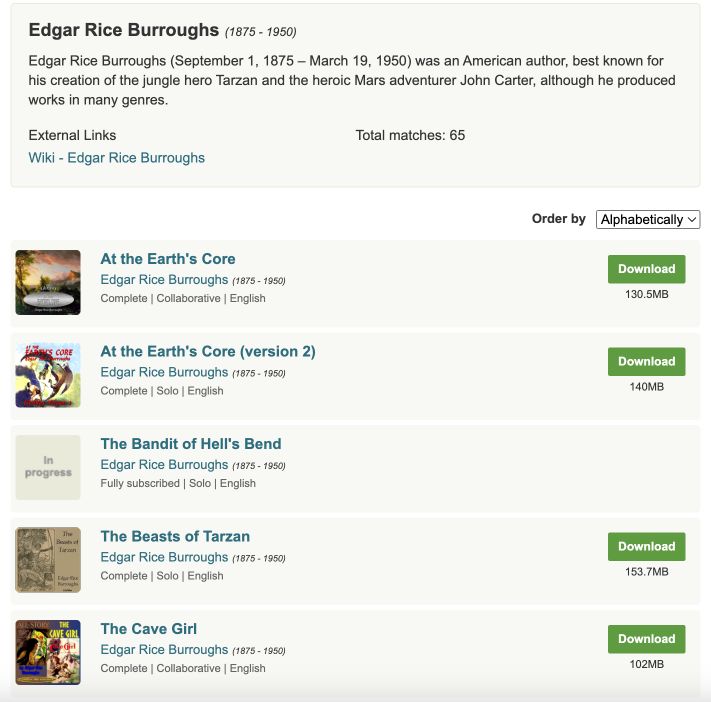
Open Library
Open Library offers over 1.7 million free ebooks, including a significant number of public domain works. It provides an easy-to-use interface for borrowing digital books.
Project Gutenberg
Project Gutenberg is one of the oldest and largest digital libraries, offering a collection of over 60,000 free eBooks, including many classic works in the public domain. The books are available in multiple formats, including HTML, epub, Kindle and plain text.
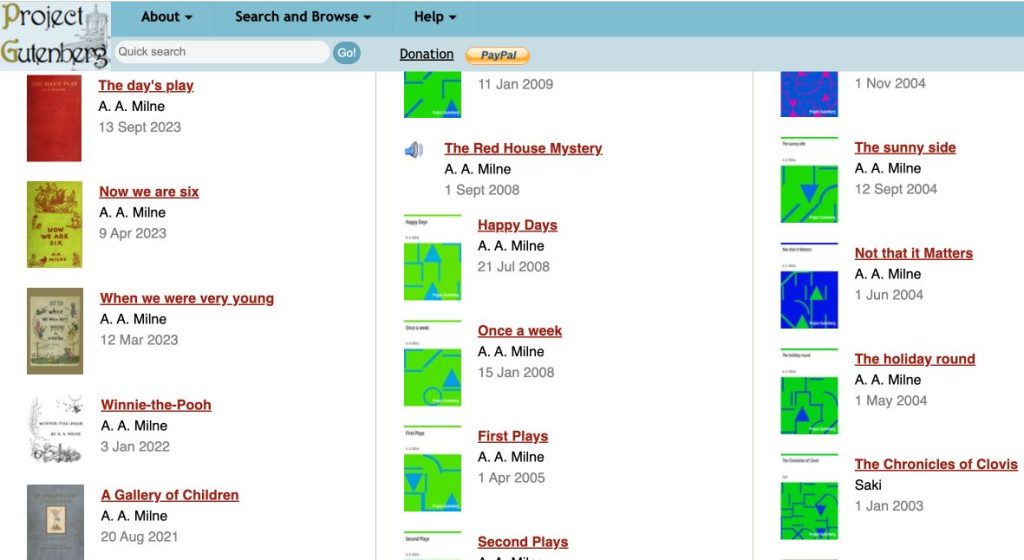
Wikisource
Wikisource is a Wikimedia project that aims to host free, freely licensed and public domain source texts. It includes a growing collection of literary works in multiple languages.
Final thoughts
In conclusion, public domain books bring a great chance to enjoy and use classic works without worrying about copyright. With titles like To the Lighthouse and Men without Women now free to access, writers, teachers and readers can explore and share these literary treasures. Every year, more famous works join the public domain, opening even more possibilities for creativity and learning. Websites like Project Gutenberg, HathiTrust and the Internet Archive make it easy to find these books, allowing everyone to enjoy and benefit from these timeless works.
Contact me if you are an author looking for editing or indexing services. I am an experienced editor offering a free sample edit and an early bird discount.

